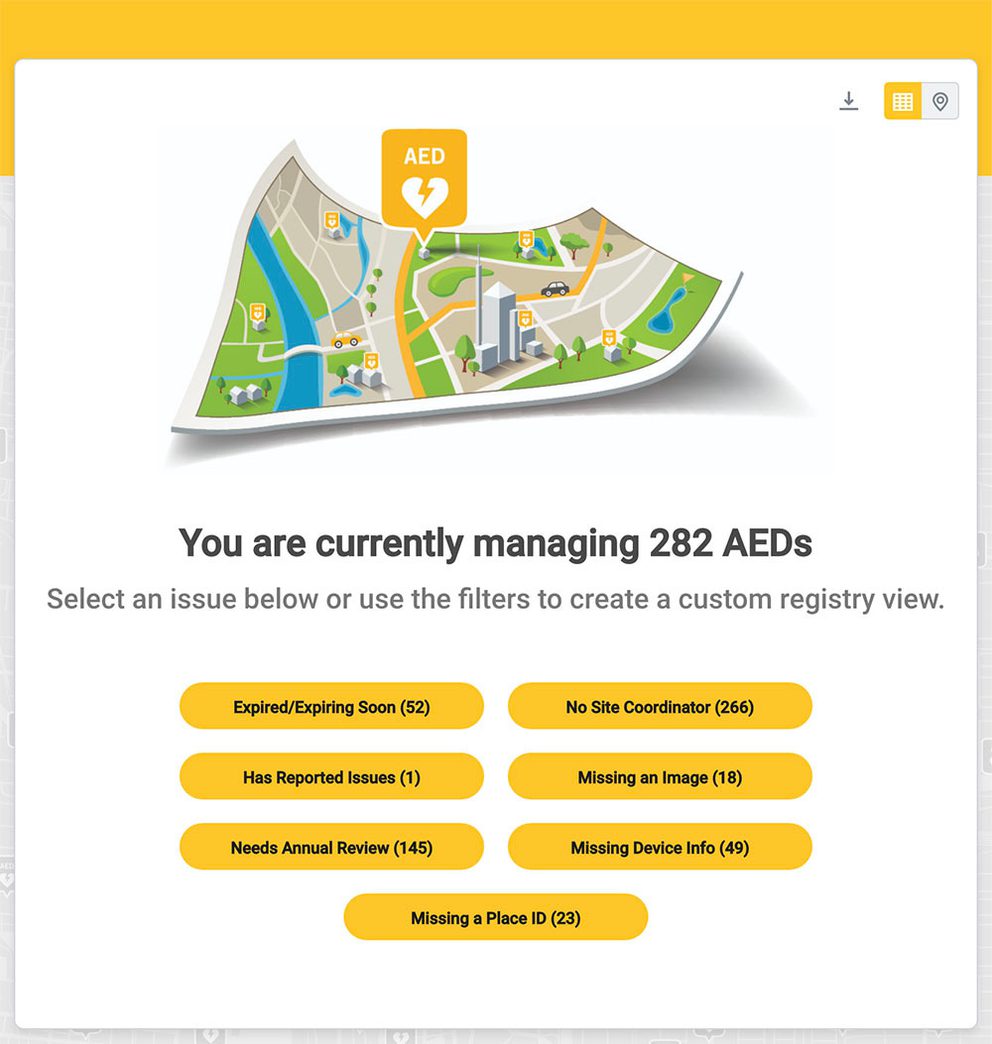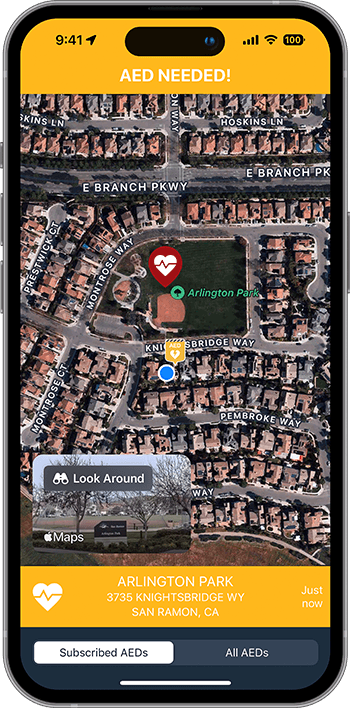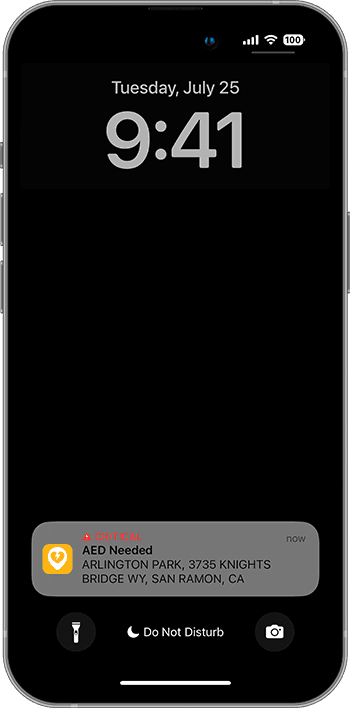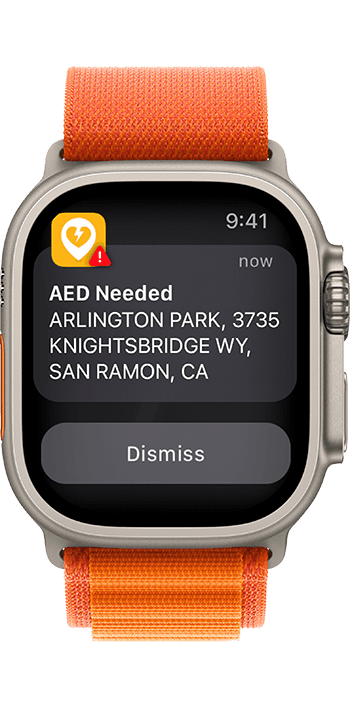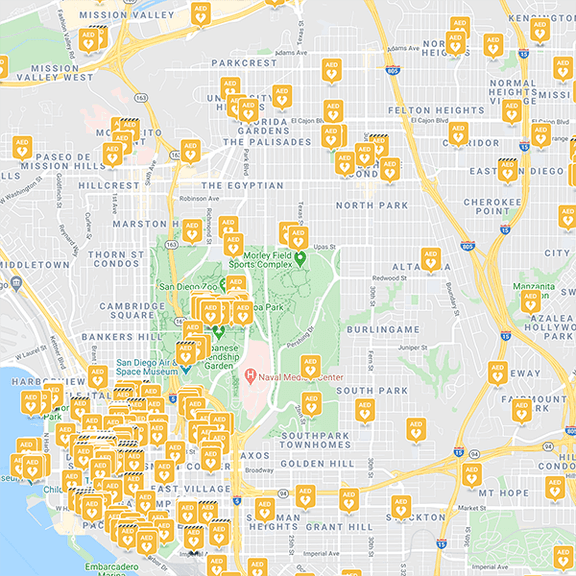AED Registry Management
Top 10 Ways To Improve Your AED Registry
For years public safety agencies have been promoting the purchase and placement of Automated External Defibrillators (AED), but without an effective AED registry to put these lifesaving devices into action during a cardiac arrest event, we’re not fully realizing their potential.
Use the proven strategies below to improve the effectiveness and community impact of your AED registry.
For years public safety agencies have been promoting the purchase and placement of Automated External Defibrillators (AED), but without an effective AED registry to put these lifesaving devices into action during a cardiac arrest event, we’re not fully realizing their potential.
Use the proven strategies below to improve the effectiveness and community impact of your AED registry.
Completeness tops the list
A comprehensive record for each AED in the community forms the basis of an effective registry.
Making a concerted effort to locate every AED takes an aggressive strategy that should incorporate members of the community. In the Partner with your community section below, we’ll outline how to encourage and empower your citizens to help build and maintain the registry.
Meaningful location descriptions, business hours, public access restrictions, cabinet access codes, and AED owner/coordinator contact information are examples of data points that add to the overall quality and capability of the registry.
Including photos that present the AEDs in the context of their surroundings can make them easier to locate in an emergency. Including AED manufacturers and models can support model-specific dispatcher instructions, recall notices, and other manufacturer advisories.
The PulsePoint AED Registry will continually analyze its entries looking for incomplete records. Each time you log in, you’ll see a summary of AEDs needing attention presented as pre-defined query buttons in the main window.
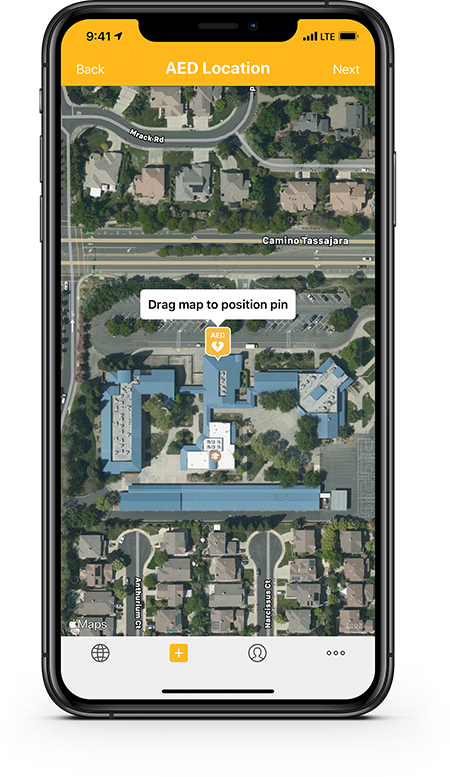
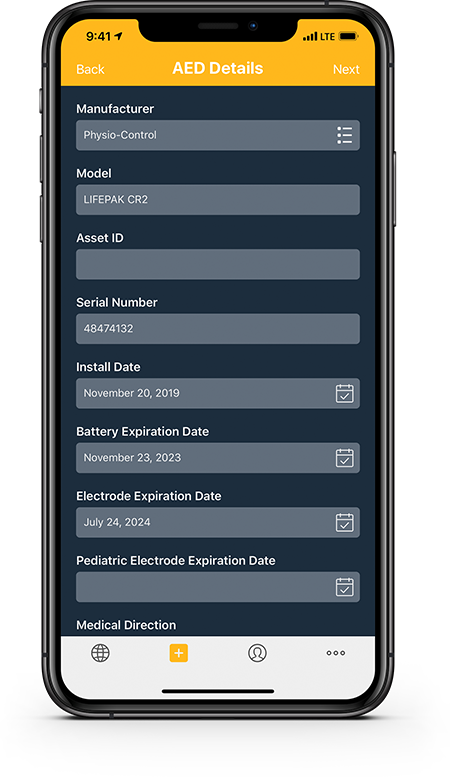
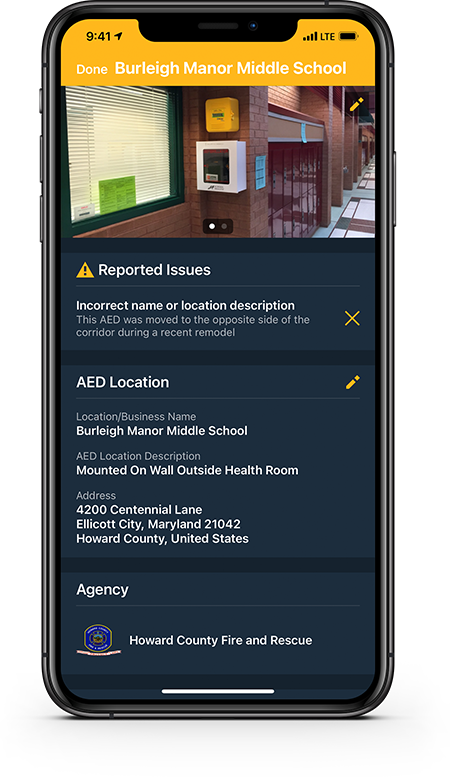
Attention to detail
Accurate AED records can greatly improve the odds that a nearby device will be placed in service during a cardiac arrest event.
Meaningful location descriptions such as “In the gymnasium, under the scoreboard,” are much better than “on the west wall” (compass points are best avoided). The use of satellite imagery and geospatial coordinates that allow rapid map-based direction and retrieval are vastly superior to text descriptions alone. Ensuring that pin placement is precise is a key component of registry quality control.
Collection and maintenance of expiration dates for all AED consumables, such as batteries and pads, should be maintained. Collection of expiration dates supports expiration reminders and helps ensure that AEDs will be ready when needed.
When “report an issue” mechanisms are used by the community, such as stating an AED is not ready for use or an establishment is out of business, addressing the feedback report promptly is important. This helps keep the registry accurate and reinforces the community feedback loop.
Each AED record should be individually reviewed on a periodic basis. The PulsePoint AED Registry will highlight any AED not reviewed in the past 365 days.
Provide simple methods to register AED locations
Provide simple, convenient methods to add AEDs directly into the community registry—no paper forms and no rekeying of information.
Communities should host an online data entry form on their website to allow AED owners to register an AED. AED coordinators and community volunteers can use the PulsePoint AED app to simplify field-based data collection, including capturing images and determining precise GPS coordinates. PulsePoint agencies can also advise community members to use the easy-to-remember website, aed.new to report new devices to their registry.
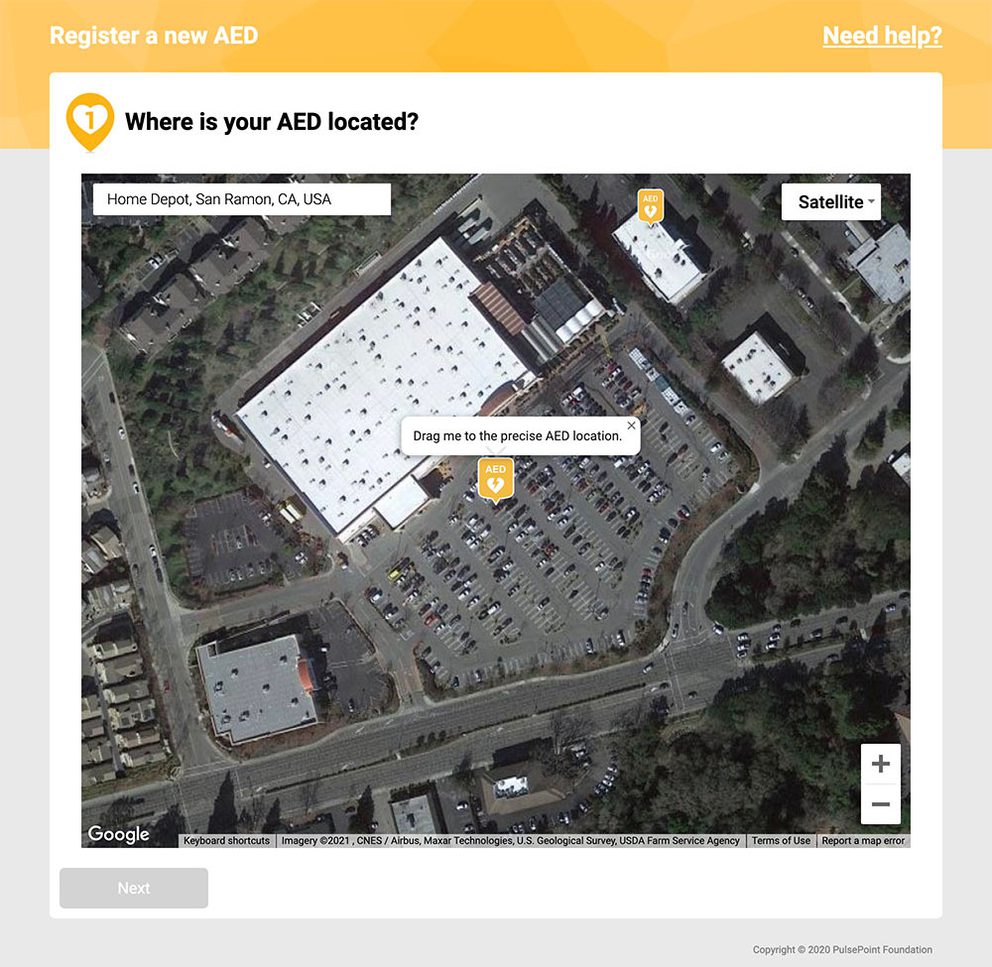
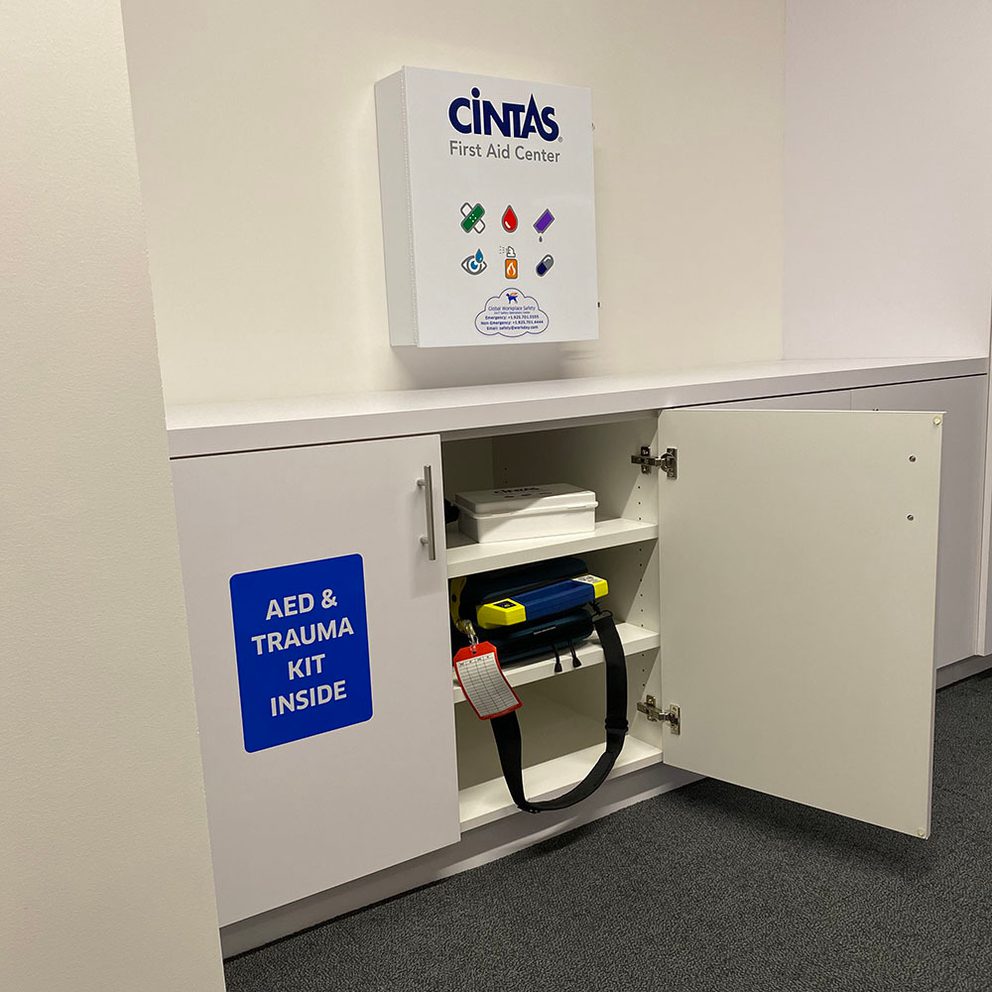
Promptly review and approve community submitted AEDs
Be responsive to those helping to build and improve your registry.
AEDs submitted by the community are placed in a "pending" status until reviewed by the local public safety agency. These pending AEDs are not shared with dispatchers or other responders and are not shown on public-facing agency AED maps. Promptly vetting these entries is considered a best practice. The PulsePoint AED Registry will highlight any AED in a pending status.
Emergency dispatchers need access to the community AED registry
Emergency telecommunicators should have the ability to inform the caller of the location of nearby AEDs—not just ask if there is an AED nearby during a cardiac arrest emergency.
POWERING TELECOMMUNICATORS WITH THE LOCATION OF EVERY AED
Emergency Communications Center (ECC) telecommunicators are a critical link in the cardiac arrest chain of survival. Similar to providing cardiopulmonary resuscitation instruction (T-CPR), equipping call takers with automated external defibrillator locations (T-AED) can improve outcomes.
STRATEGIC INTEGRATIONS WITH INDUSTRY LEADERS
The PulsePoint-hosted Emergency AED Registry is integrated with leading emergency medical dispatch (EMD), pre-arrival instruction, and tactical map vendors, including ProQA Paramount, APCO Intellicomm, PowerPhone Total Response, and RapidDeploy Radius. These strategic integrations allow telecommunicators to inform callers of the exact location of registered AEDs within familiar applications and workflows.
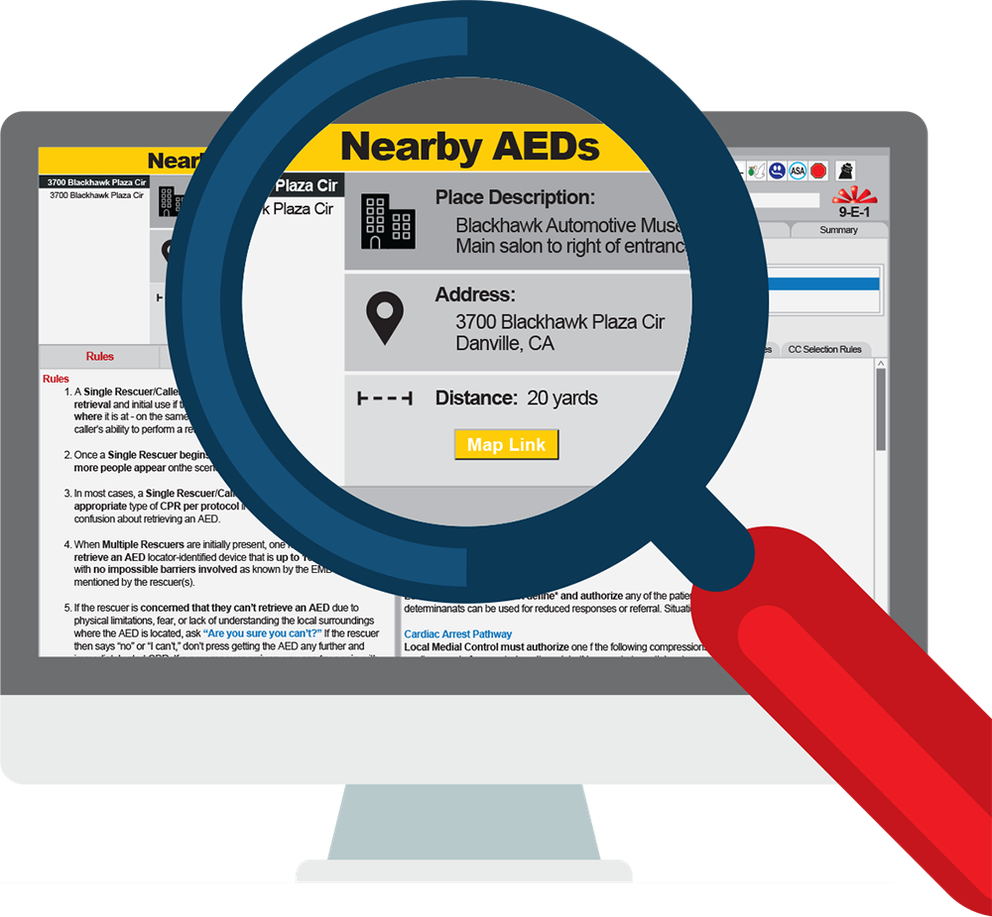

AED-needed Alerts
When a cardiac arrest occurs near a registered AED, subscribers to that device can receive an AED-needed alert requesting they deliver the AED to the reported location.
- Industry-wide support for all AED manufacturers and models.
- Notifications are based on AED proximity to the cardiac event–no personal location sharing.
- Receive AED-needed alerts on your phone, watch, or tablet – and simultaneously across all signed-in devices.
- Multiple participants can subscribe to a single AED (i.e., Neighborhood AED program, Workplace Safety Team).
- Critical alert support can override the Do Not Disturb setting. Time-sensitive and normal alerts can be managed using focus settings.
- View street-level imagery of where the AED is needed, including an interactive 360° daytime panorama of the destination address.
- Tap an AED icon for additional details, including device/cabinet image in the context of its surroundings, full location description, and accessibility information such as access codes and business/location hours.
- Responsible parties can independently conduct testing for individual subscribers.
- Utilizes PulsePoint’s existing network of ECC system integrations.
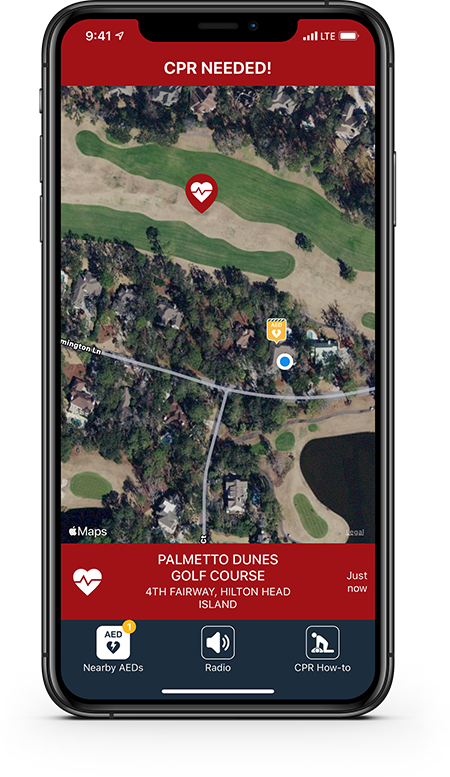
Disclose AED locations to emergency responders
Along with the intention of getting CPR started faster and more often, a key objective of the PulsePoint Respond app is to use the registry to inform those near a cardiac arrest event of the location of AEDs in the immediate vicinity of the victim (and to notify those nearby carrying a personal AED).
According to the latest AHA guidelines, "emergency dispatch systems should alert willing bystanders to nearby events that may require CPR or AED use through mobile phone technology (Class 1, LOE B-NR). Despite the recognized role of lay rescuers in improving OHCA outcomes, most communities experience low rates of bystander CPR and AED use. Mobile phone technology, such as text messages and mobile phone apps, is available to summon trained members of the general public to nearby events to assist in CPR and to direct those responders to the nearest AED. Notification of lay rescuers via a mobile phone app results in improved bystander response times, higher bystander CPR rates, shorter time to defibrillation, and higher rates of survival to hospital discharge."1
Display and manage resources colocated with AEDs
Critical medications and supplies required for extremely time-sensitive medical emergencies such as severe bleeding, anaphylaxis, and opioid overdose are commonly being colocated with AEDs. These resources include Bleeding Control Kits, Naloxone (Narcan®), and Epinephrine (EpiPen®). Recording the presence of these items in the AED registry offers awareness to dispatchers and community members along with surveillance of dressing and drug expiration dates in a similar fashion to AED consumables (e.g., electrodes, batteries).
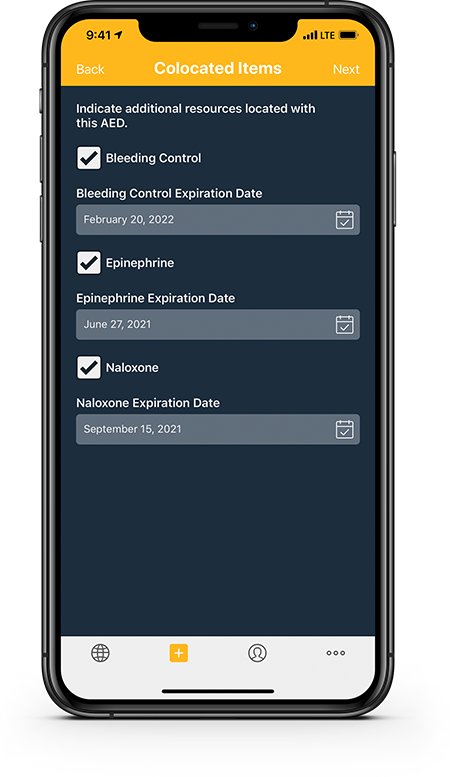
Promote your registry
Your AED registry shouldn't be a secret! Use the trusted voices in your community to publicly discuss the registry and the importance of knowing where all AEDs are located.
Recognize dispatchers and community members that use the registry during cardiac arrest emergencies.
Place a map of AED locations on your website to showcase the existence of the registry and encourage people to report missing device.
Partner with your community
Direct citizen participation can help create greater location awareness and mindfulness of the important role AEDs play in out-of-hospital cardiac arrest survival. Use contests and community events to foster conversations around public AEDs, reduce fear of their use, and make identifying and locating AEDs a family activity.
PulsePoint provides a wide range of outreach tools and campaign strategies to get your community AED-aware and ready to help. PulsePoint apps and marketing materials are available in multiple languages. If your agency serves a multilingual community, supporting the demography languages is critical for life-saving resources like AEDs. Here are just a few examples from the strategies link above:
- Partner with Boy Scouts/Girl Scouts to register AEDs as part of their community programs.
- Host an AED scavenger hunt and offer prizes to those that register the most AEDs.
- Piggyback on awareness weeks/months such a Heart Month (Feb.), Sudden Cardiac Arrest Awareness Month (Oct.), CPR/AED Awareness Week (June 1-7), etc., to promote AED awareness and encourage people to register AEDs.
- Place registered stickers on your AED cabinets to indicate that an AED has been added to the community registry. The stickers can also serve to increase program awareness and encourage others to add additional AED locations.
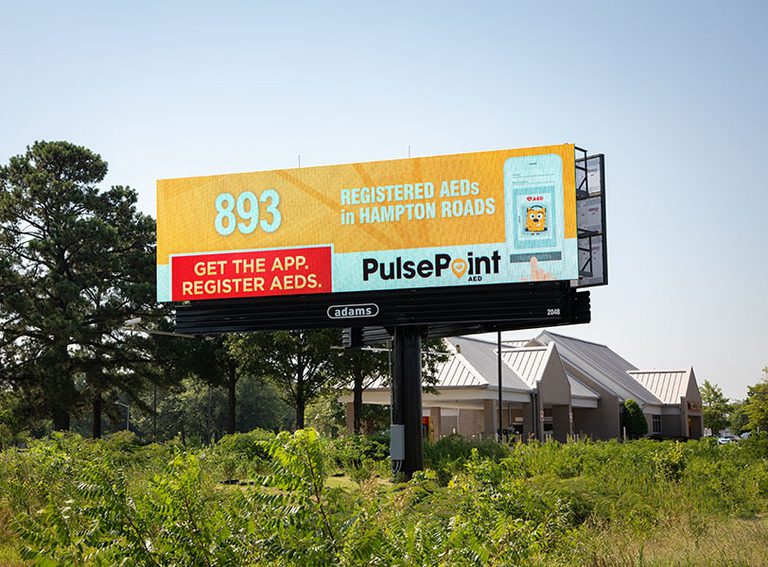
PulsePoint is a public, non-profit 501(c)3 organization that provides a comprehensive AED registry as part of its core mission to improve cardiac arrest survival. There is never a charge to use any aspect of the PulsePoint AED registry.
1. Executive Summary, 2020 American Heart Association Guidelines for Cardiopulmonary Resuscitation and Emergency Cardiovascular Care, section 7.1
